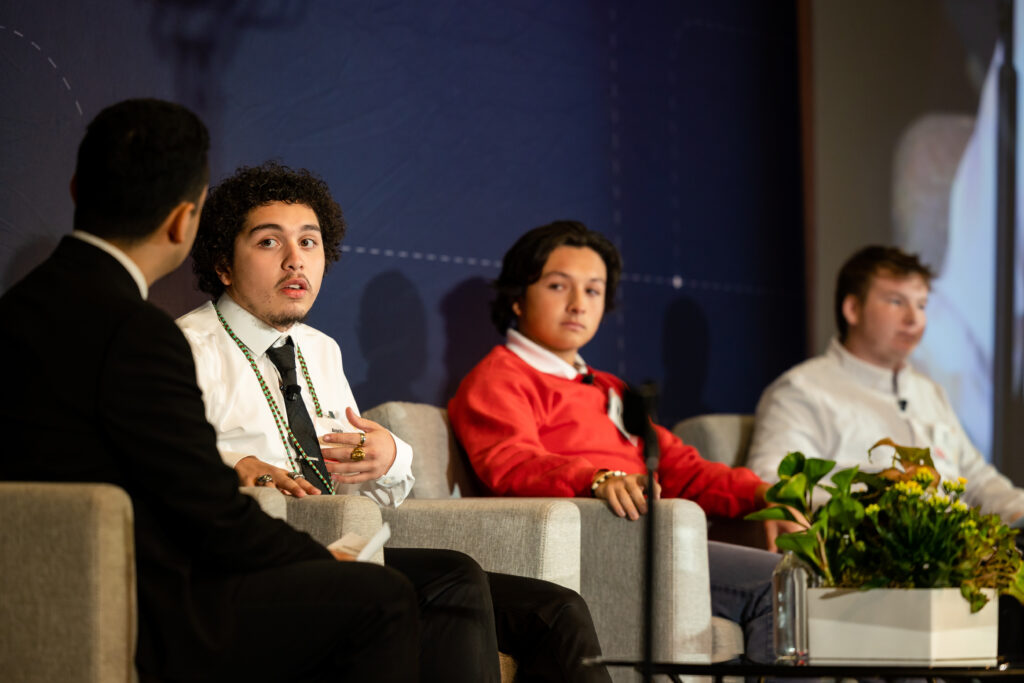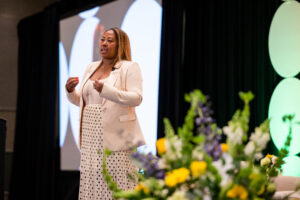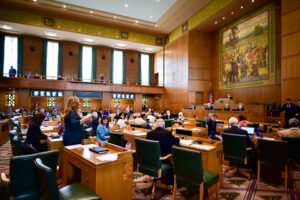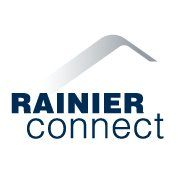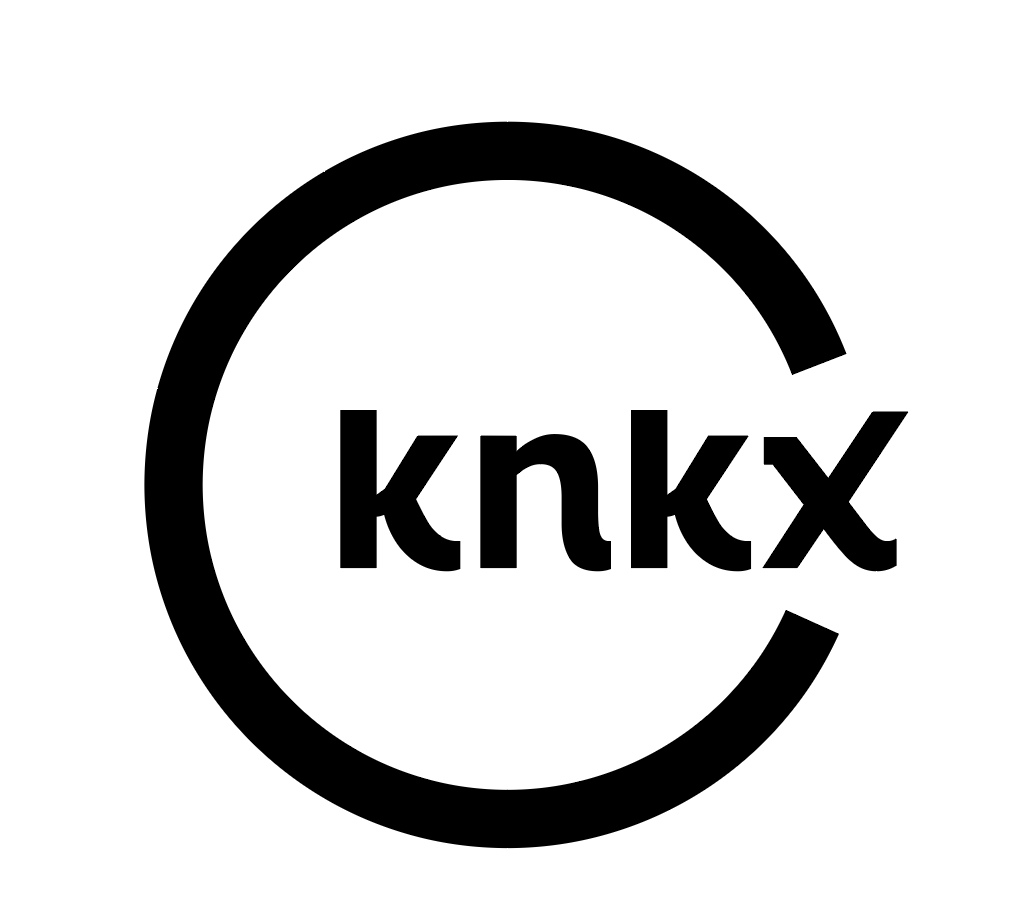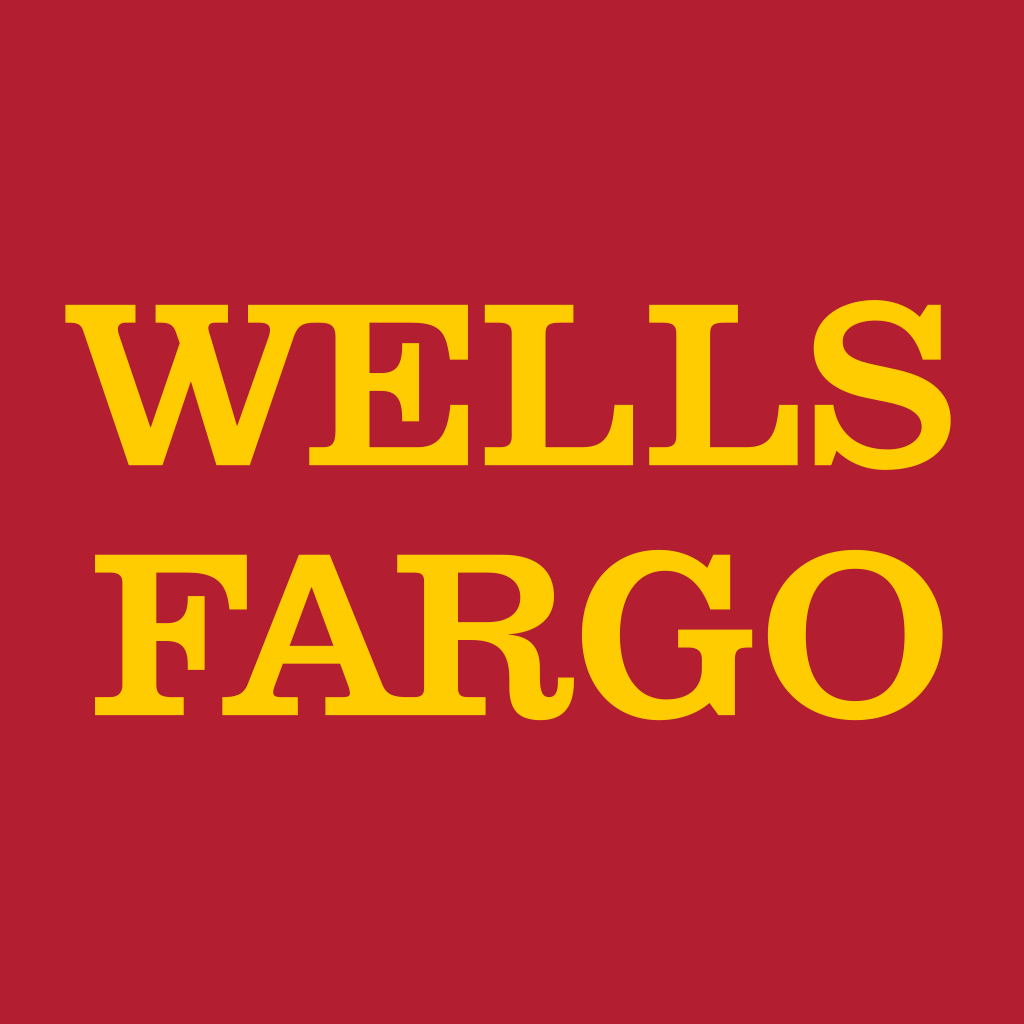As a community, we are striving to achieve a 70% postsecondary attainment rate by 2030, ensuring every student has the resources and opportunities to succeed. We know this is ambitious, and yet we remain optimistic. The second annual State of Public Education convening on October 25 serves as a powerful reminder of the challenges and opportunities that lie ahead in building a just and equitable education system.
This year’s event brought together a diverse range of speakers and panelists, from educators to students, community leaders to policy experts. While each component of the education landscape faces unique obstacles, several key themes emerged: more child care support, funding for afterschool programs, access to financial aid for postsecondary education or trade programs, and earn-as-you-learn workforce pipelines.
One of the key takeaways from our recent community dialogue was the importance of equity in education. Equity in education is not just a buzzword; it’s the heart of every conversation around student success. Each step forward derives from the importance of every student receiving equitable access to resources and opportunities.
Early Learning: Laying the Groundwork for Success
Our community faces systemic barriers that limit equitable access to early childhood education. With less than 5% of needed childcare slots available for infants and toddlers, many families struggle to find affordable, quality options. This shortage disproportionately affects children from middle and low-income backgrounds, leaving them without the essential early education they need and causing them to start kindergarten at a disadvantage. The scarcity of accessible and affordable childcare also places an undue burden on parents, often limiting their opportunities to further their own education and career aspirations.
Panelists emphasized the need for a comprehensive approach to early childhood education that focuses on building a more inclusive and supportive system. By increasing availability, improving affordability, and raising quality standards, we can guarantee every child the opportunity to benefit from vital early enrichment.
Providing equitable access to these foundational early learning experiences is crucial—it’s not a matter of privilege, but a fundamental component for the future success and well-being of the children in our community.
Expanded Learning: Beyond the Classroom
True holistic development goes beyond the classroom. It encompasses a range of extracurricular programs and after-school initiatives, all of which are crucial for comprehensive student growth. Leading this charge are organizations like the Boys and Girls Club and Greentrike, which have been instrumental in providing enriching programs for youth. Initiatives such as the Summer Teen Late Night program are exemplary, offering safe spaces for students beyond school hours for personal growth and exploration.
Panel discussions shed light on the significant gaps in access to these opportunities, particularly for students from families with low-income. By increasing investment in these valuable expanded learning opportunities and addressing the systemic barriers that limit access, we can provide all students, regardless of background, with the tools they need to explore their interests and develop as individuals ready to achieve their aspirations.
K-12 Pulse Check Between Superintendents And Students
Meanwhile, school superintendents Dr. Joshua Garcia of Tacoma Public Schools and Dr. Lance Goodpastor of Franklin Pierce School District had plenty to say about the state of K-12 education. The overarching message was one of concern for equity and inclusivity. Critical issues highlighted were the barriers hindering access to quality mental health care, stable housing, and transportation – essential building blocks for students to unlock their full potential.
As the panel continued, the focus shifted on the roadmap of the new year ahead and the current problems to address. Challenges such as a lack of funding for after-school programs and the need for future-proofing job accreditations were identified as crucial areas requiring attention. Programs such as Beyond The Bell and Club B showcase the importance of “creating spaces for youth to be places.” To develop agency and aligning systems for learning are essential components of a student’s natural progression, both in school and at home.
While acknowledging the need for sustained investment in education, the superintendents praised the success of guaranteed college admission programs and record-high graduation rates. They pointed to the positive outcomes achievable through the Graduate Tacoma movement. It’s a known testament to our community’s strength that these partnerships continue to rise and persist. However, we must collectively strive to ensure that these resources reach the students who need them the most.
Post-Secondary Education: Opening Doors
The transition from high school to post-secondary education is a pivotal moment, but one that is often complex and challenging to navigate. College affordability is a major concern, but support systems are also critical for student success.
WSAC Councilmember, Sativah Jones, shared how programs like the Washington College Grant are making higher education more accessible by assisting families earning up to $112,000 per year. However, awareness remains an issue. We must promote these options earlier, even before high school, to expand access.
The college transition isn’t just academic, but also emotional and psychological. Creating supportive environments is crucial, especially for underrepresented groups like first-generation students, students of color, and those experiencing homelessness. By increasing access and surrounding students with guidance, we can make this passage a truly empowering experience on the path to opportunity.
Workforce Readiness: Bridging Education and Employment
Our workforce panel emphasized the critical need to create professional pipelines that effectively bridge the gap between education and employment. Initiatives like Jobs 253 and others, which promote diversity in professional fields, are crucial in setting this path forward. These programs are instrumental in ensuring students are not just prepared for their careers but are also placed on a trajectory for credential attainment.
Our community leaders understand that workforce success extends beyond just obtaining professional degrees. Introducing students to a wide array of career opportunities, including professional trades, internships, and apprenticeships, from an early age is essential. This diverse exposure helps students find careers that offer not just employment, but also a sense of purpose and fulfillment.
While “The State of Public Education” event has concluded, the discussions have significantly deepened our understanding of the challenges and opportunities in education throughout Pierce County.
This event brought together passionate individuals and community leaders who shed light on the multifaceted challenges and potential opportunities in our educational landscape, spanning from early learning to postsecondary education and workforce development.
We recognize that the journey ahead will be filled with obstacles, but our commitment is fueled by hope and determination.

